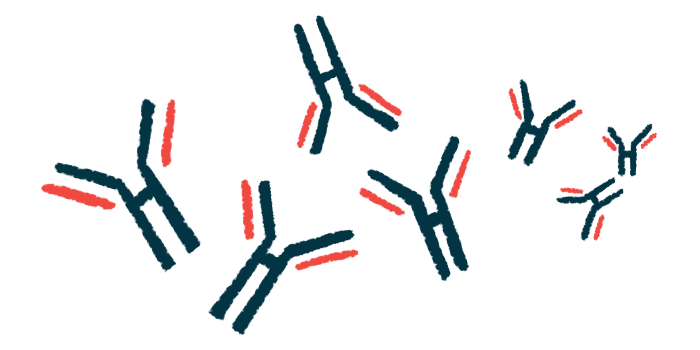IgG antibody levels may signal depth of response to plasmapheresis
Improvements with plasma exchange greater in MG patients with higher drop

Measuring how much immunoglobulin G (IgG) antibody levels drop after plasmapheresis, a blood-cleansing treatment for myasthenia gravis (MG), may help in determining the disease’s likely course, at least in the short term, a small study suggests.
Changes in this potential biomarker that signal improvement also could help in deciding the number of plasmapheresis sessions needed for effective treatment, leading to more personalized therapy strategies for people with MG.
The study, “Serum immunoglobulin G level reduction is a predictor of short-term improvement in patients with myasthenia gravis undergoing plasmapheresis,” was published in the journal Therapeutic Apheresis and Dialysis by two researchers in Japan.
Plasma exchange treats myasthenia gravis by clearing self-reactive antibodies
Myasthenia gravis occurs when self-reactive antibodies wrongly target proteins involved in nerve-muscle communication, disrupting the process and leading to disease symptoms of muscle weakness and fatigue that worsen with exercise and improve with rest.
Plasmapheresis, or plasma exchange, is a form of treatment in which plasma — the liquid part of blood — is separated and replaced with a fresh fluid before the blood is returned to the patient. Since antibodies float in plasma, such filtering is expected to help eliminate MG-causing self-reactive antibodies and ease disease symptoms.
However, “there is no clear rationale for the appropriate number of [plasmapheresis] sessions,” the researchers wrote, leading them to search for a blood biomarker that might help predict patients’ response to plasmapheresis.
They examined data from a group of MG patients who visited their Tokyo hospital between April 2000 and May 2022, undergoing plasmapheresis as part of their treatment.
In total, the study included 21 patients (15 women, six men). They had experienced their first MG symptoms at a median age of 55, and underwent a first plasmapheresis at a median of one year after disease onset.
Most patients (85.7%) tested positive for antibodies against the acetylcholine receptor (AChR) protein, the most common cause of MG. All had generalized myasthenia gravis, a form characterized by widespread muscle weakness and fatigue.
The most common indication for plasmapheresis was difficulty swallowing or dysphagia (42.8%), followed by myasthenia crisis — a severe breathing complication that requires hospitalization (39.8%), and weakness in the limbs (19.9%).
Two weeks after plasmapheresis, all had a median improvement rate of 50% in their clinical status. This was measured using the MG composite scale, where the total score ranges from 0 to 50, with a higher score indicating more severe symptoms.
IgG antibody levels may predict MG’s course in weeks after plasma exchange
Eleven patients (52.4%) showed an improvement rate above the median and were said to have a favorable response to treatment. In the other 10 (47.6%), the improvement rate was below the median, and response to treatment was classified as unfavorable.
Patients in both groups underwent a median of six plasmapheresis sessions, but patients in the favorable group had a larger drop in IgG levels than those in the unfavorable group (56% vs 37%).
A reduction in IgG levels across all patients linked with a 10% greater chance of having a favorable response to treatment, suggesting that IgG antibodies may be used as biomarkers to predict MG’s course after plasmapheresis.
IgG antibodies are the most abundant in the body, and those directed against AChR are mainly IgG antibodies of the subtypes 1 and 3. In patients who tested positive for anti-AChR antibodies, a reduction in their rate also linked with a favorable response.
While a small study, both in terms of patient numbers and its reliance on data from a single site, findings suggest that “IgG reduction rate is a predictor of symptom improvement in MG patients who underwent [plasmapheresis],” the researchers wrote.
The benefits of plasmapheresis, however, are typically rapid but temporary.
“These results are consistent with the known findings that [plasmapheresis] is an effective treatment in the first few days to weeks after initiation … and does not improve long-term prognosis [disease outlook],” the researchers wrote.







